What Hi-Fi? Verdict
The Philips Fidelio is a well-specced, room-filling single soundbar that is slightly let down by some sonic brashness
Pros
- +
Clear vocals
- +
Excellent connectivity
- +
Sounds both expansive and direct
Cons
- -
Sonically, a touch harsh
- -
Excessive menu options
- -
No VRR/ALLM support
Why you can trust What Hi-Fi?
Beethoven, grumpy perfectionist that he was, only ever got around to writing the one opera about a woman who disguises herself as a male guard called Fidelio to save her husband, a political prisoner, from death – in that way that people in operas tend to do.
But AV enthusiasts may better know Fidelio as Philips’ ranges of premium headphones and speakers, including its latest home cinema offering, the Fidelio FB1 Dolby Atmos Soundbar, which, much like Beethoven’s titular character, is deceptively cunning with an awful lot lurking underneath its seemingly plain exterior that you might not expect at first sight.
Price
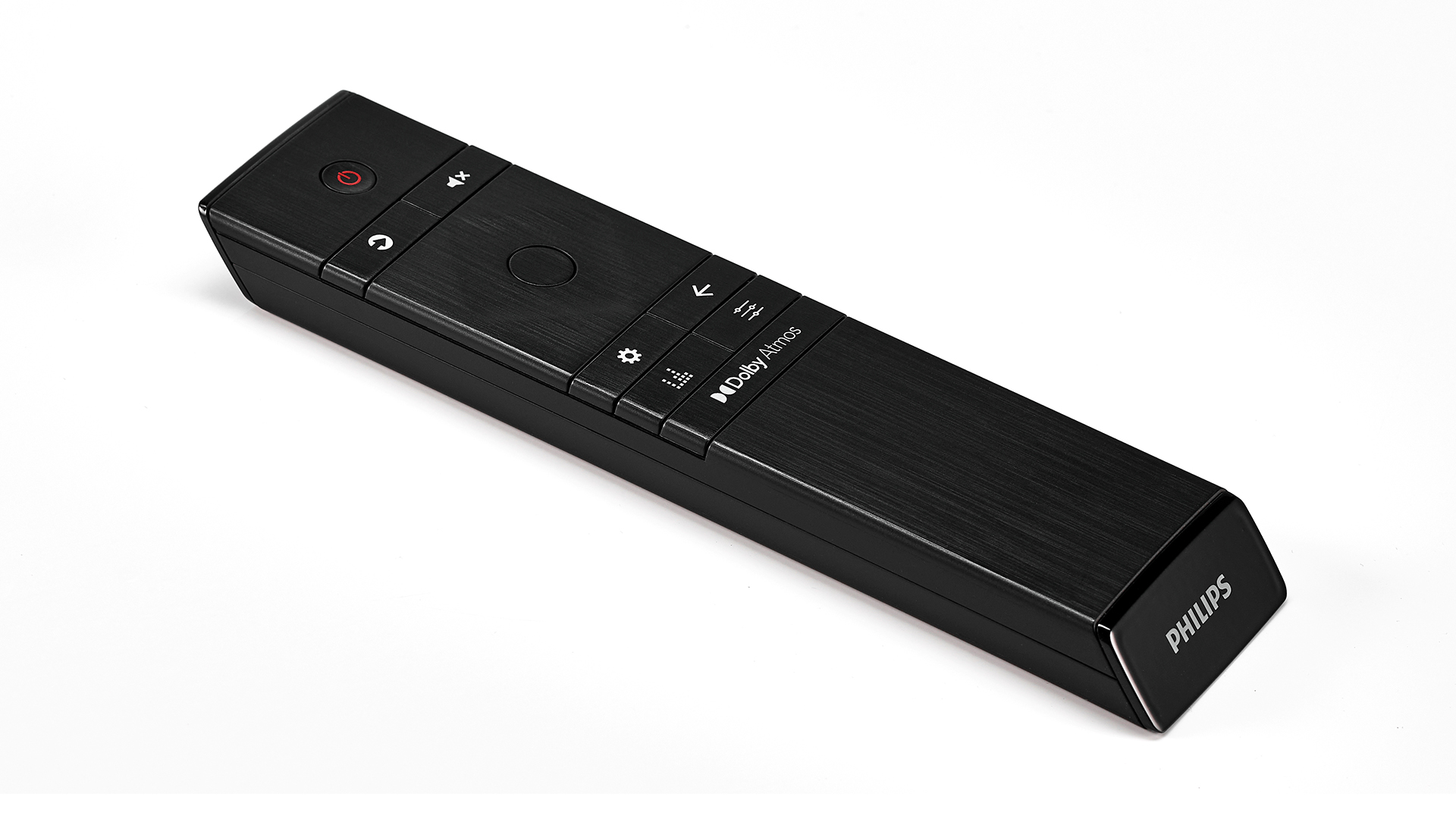
With a launch price of £799 / / $800 / AU$1316, the Fidelio FB1 undercuts its closest rival, the Sonos Arc, which ordinarily costs £899 / $899 / AU$1499. Like the Arc, it can be expanded through the addition of a sub and surrounds. In the Fidelio’s case, these options include up to two Fidelio FW1 wireless subwoofers at £549 each (around $633 / AU$989) and the Fidelio FS1 bookshelf-sized wireless speakers with upward-firing drivers, each costing £329 (around $380 / AU$593).
Philips says that the entire system offers 7.2.4 channels of audio, and both sub and surround also come with LED backlights to extend the glow of a Philips Ambilight TV around your living room. For our review, we're testing the FB1 soundbar without any add-ons, and we're pleasantly surprised to find it does an excellent job of delivering bass and surround effects all on its own.
Build
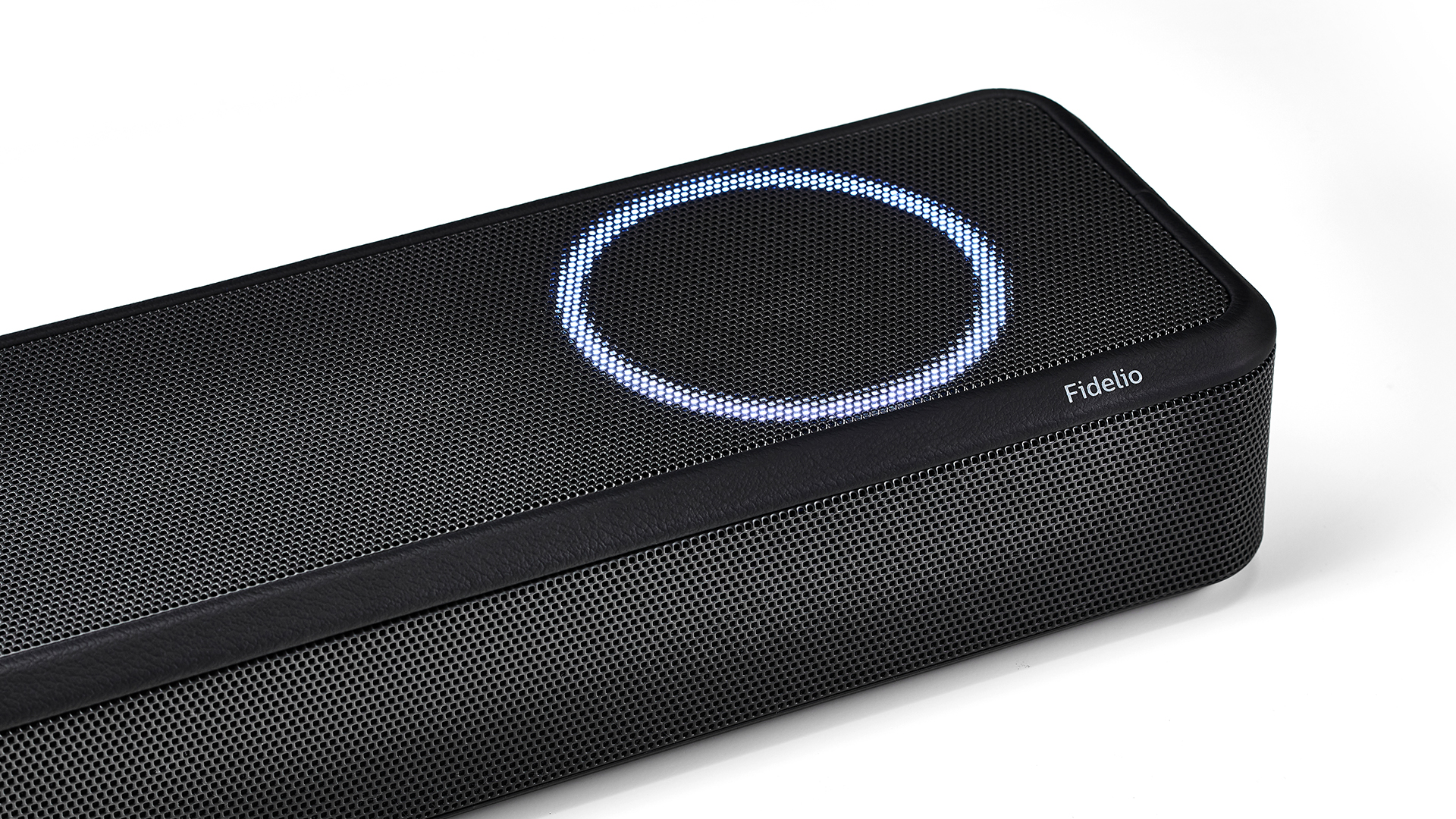
The Fidelio FB1 is described by Philips as a 7.1.2 soundbar and has a massive 15 drivers concealed under its dark grey wraparound metal grille, tastefully trimmed with perfectly colour-matched Muirhead leather. It might not be vegan-friendly, but with the FB1 Philips has found a way to strike a balance between understatement and sleek design touches that mean this soundbar appears more compact than it actually is.
Across the front are three LCR channels, each featuring a solo 25mm soft-dome Teteron tweeter flanked by a pair of 50mm midrange drivers in what’s known as a D’Appolito arrangement. This configuration can provide a more seamless blend between highs and mids, reducing directivity for more consistent delivery across the entire width of the bar.
At either end of the FB1 sit 63mm side-firing drivers, while the top surface houses two 63mm height drivers, ringed with ambient glowing LED lights (which you can turn off) and angled at 20 degrees to reflect sound off the ceiling. If you have a Phillips Ambilight TV, the lights can be synced, but otherwise, the soundbar's lights illuminate when Atmos content is playing.
The top surface also houses two dedicated 88mm woofers mounted in their own port enclosures, providing a claimed low-frequency extension down to 40Hz, and a capacitive playback button panel mounted on more Muirhead.
That’s an awful lot of speakers (and lights and leather) for any soundbar, particularly one measuring 120cm long. If you’ve been counting, then you’ll have realised that the Fidelio FB1’s drivers are, in fact, in a 5.1.2 configuration, but Philips says that the soundbar can process up to seven front-facing channels, two of which are then mapped onto the five horizontal driver groups to create its 7.1.2 soundstage.
Features
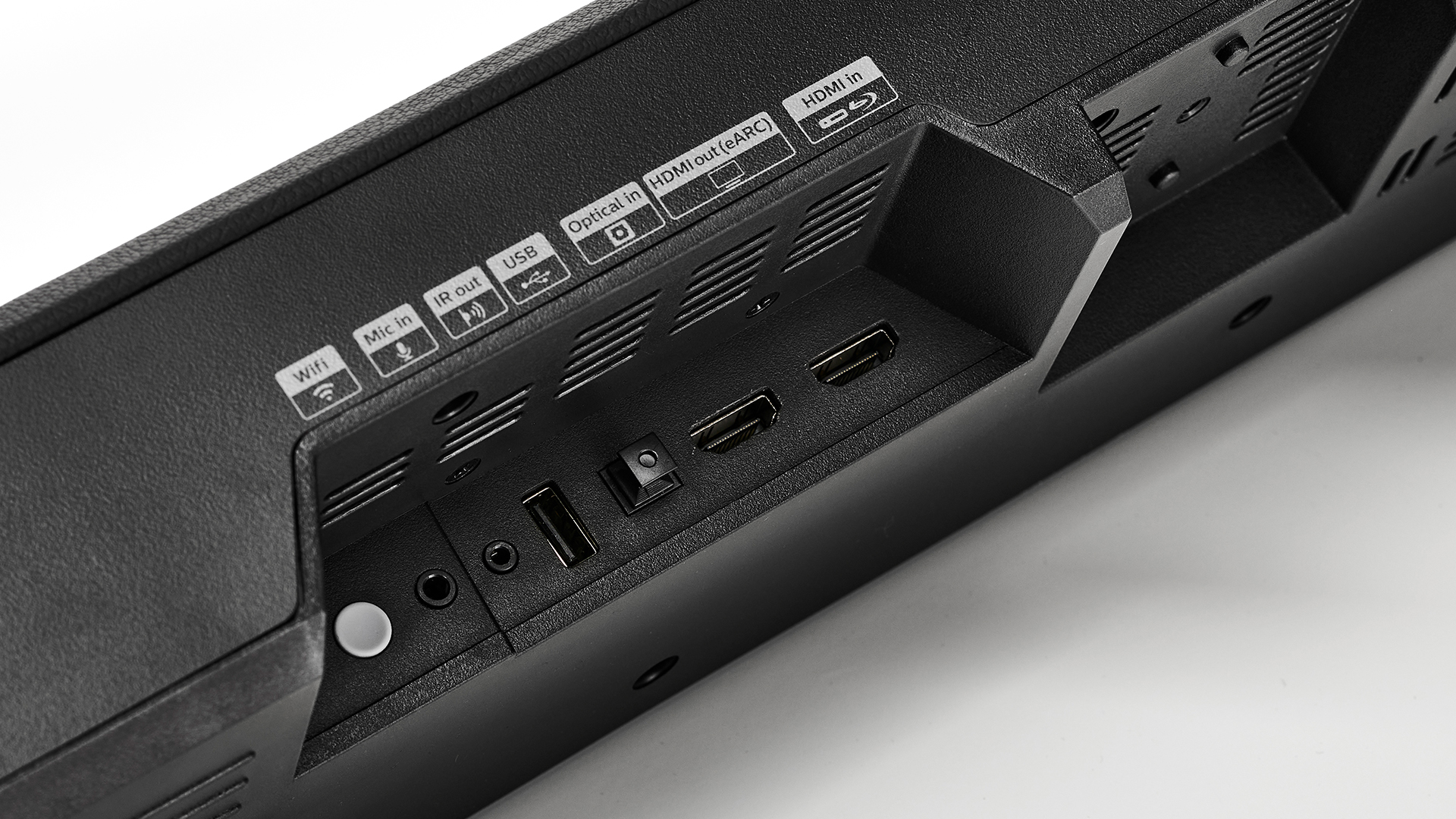
This specification probably has something to do with the Fidelio FB1’s IMAX Certification. Sound for IMAX titles is delivered via a particular version of DTS:X designed to produce a dynamic and bassy performance that’s more cinematic than you would typically experience at home. For this, DTS suggests a 7.1.2 system as the ideal set-up, but as that’s beyond the reach of most consumers, the DTS:X decoder can remap the channels to match the speakers available.
As you’d probably expect for an IMAX-certified soundbar, the FB1 is suitably well specced regarding immersive format support, with Dolby Atmos and DTS:X onboard – and formats from both companies come with customisable options. There’s a DTS: Neural X upmixing mode that defaults to ON to provide users with virtual multi-channel audio to make use of all available channels.
Meanwhile, a dedicated Dolby Atmos button on the achingly minimal remote (who needs volume arrows?) offers users four levels of ‘Atmos’ to enjoy from 0-3, described in the manual as Minimal, Small, Medium and Big height effects.
Philips says that altering this setting adjusts the volume of the upward drivers relative to the other speakers to accommodate ceiling height. The changes are subtle, but height junkies can take heart in the individual channel volume controls found in the PS Fine Tune App, where they can bump up those vertical drivers even more.
As well as level controls, PS Fine Tune offers sound ‘styles’ for Movie, Music, Voice and Stadium, all of which include a two-band EQ. Or there’s a Custom Mode which gives you access to a seven-band EQ. If you haven’t picked up on it yet, this is a product that certainly benefits from some time spent perusing the manual. There is an almost excessive number of ways to customise the sound of the FB1. We’d suggest some experimentation and perhaps making a spreadsheet to keep track of your preferences.
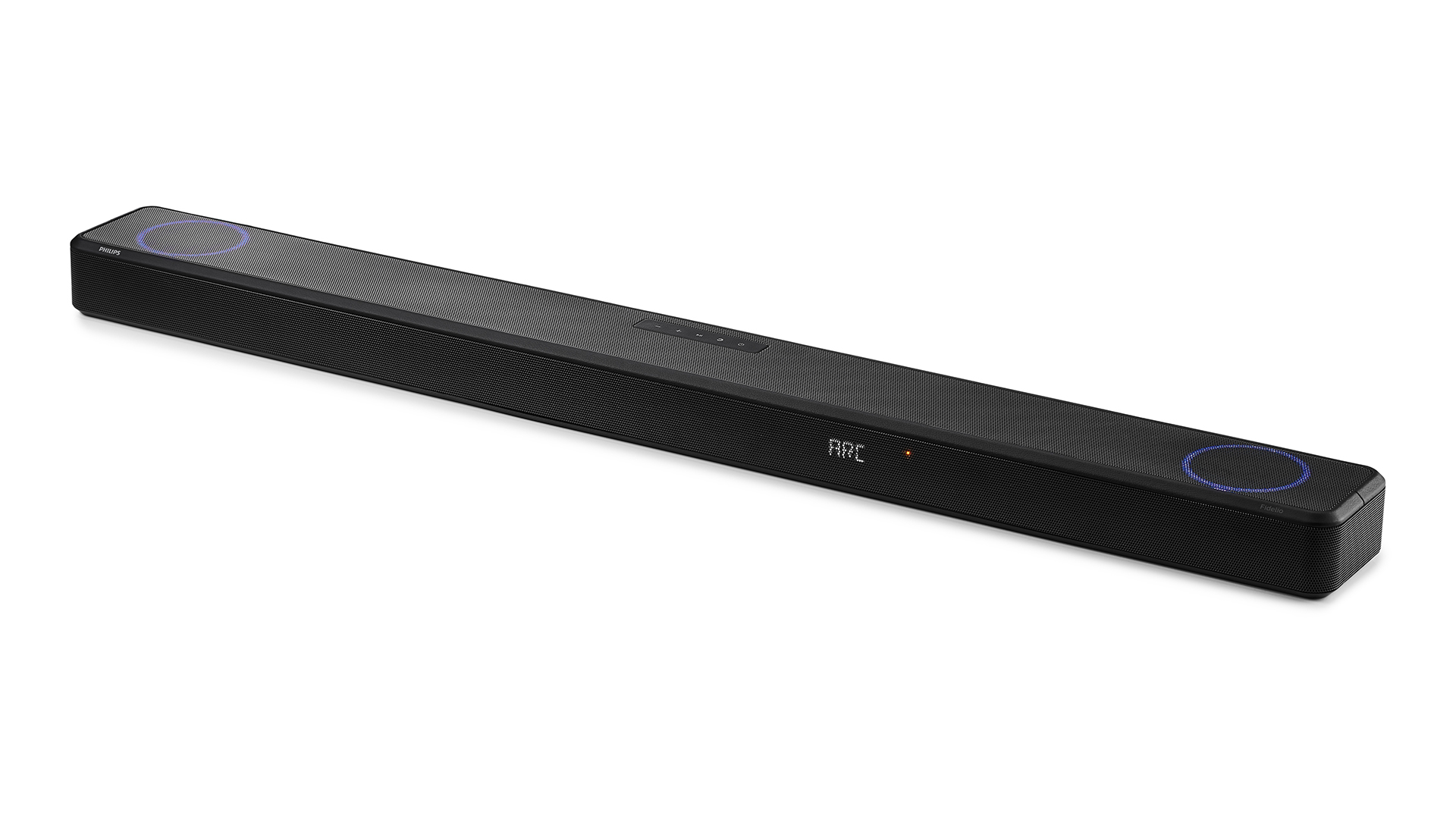
Connections eARC, 1 x HDMI, optical, USB
ARC/eARC eARC
HDMI passthrough 4K/60fps 4:4:4, HDR10+, Dolby Vision, HLG
Sound format support Dolby Atmos / Dolby TrueHD / DTS:X / DTS-HD / PCM
Bluetooth? Yes, Bluetooth 5
Wi-fi? Yes
Streaming AirPlay 2, Chromecast, Spotify Connect, DTS Play-Fi
Voice control Google Assistant and Alexa
Dimensions (hwd) 7.3 x 120 x 12.5cm
Weight 7.2 kg
PS Fine Tune is separate from the Philips Sound app, which you’ll also need for set-up. The latter uses the DTS Play-Fi platform to bring multi-channel and multiroom connectivity to Philips wireless products as well as music streaming integration and hi-res network playback. If you have a DTS Play-Fi-enabled TV, you can add its built-in speakers to your FB1 sound system with no cable required.
The two apps are due to be combined sometime in 2023, but until then, you’ll still need PS Fine Tune to easily access the abundance of sound settings that the FB1 offers without using the remote and squinting at its scrolling text display. PS Fine Tune is also where you can access the FB1’s straightforward room calibration set-up, which involves plugging a small, AVR-like microphone (included in the box) into a socket at the rear of the soundbar.
Also, in the FB1’s generous connection cubby, you’ll find HDMI eARC and optical in, as well as a USB port for hard-drive playback and one HDMI passthrough with support for 4K/60 HDR video, though not VRR or ALLM for next-gen gaming consoles. There are also plenty of ways to stream to the FB1 aside from the Philips Sound app, with AirPlay 2, Chromecast and Spotify Connect all on board, as well as Bluetooth 5.
Sound
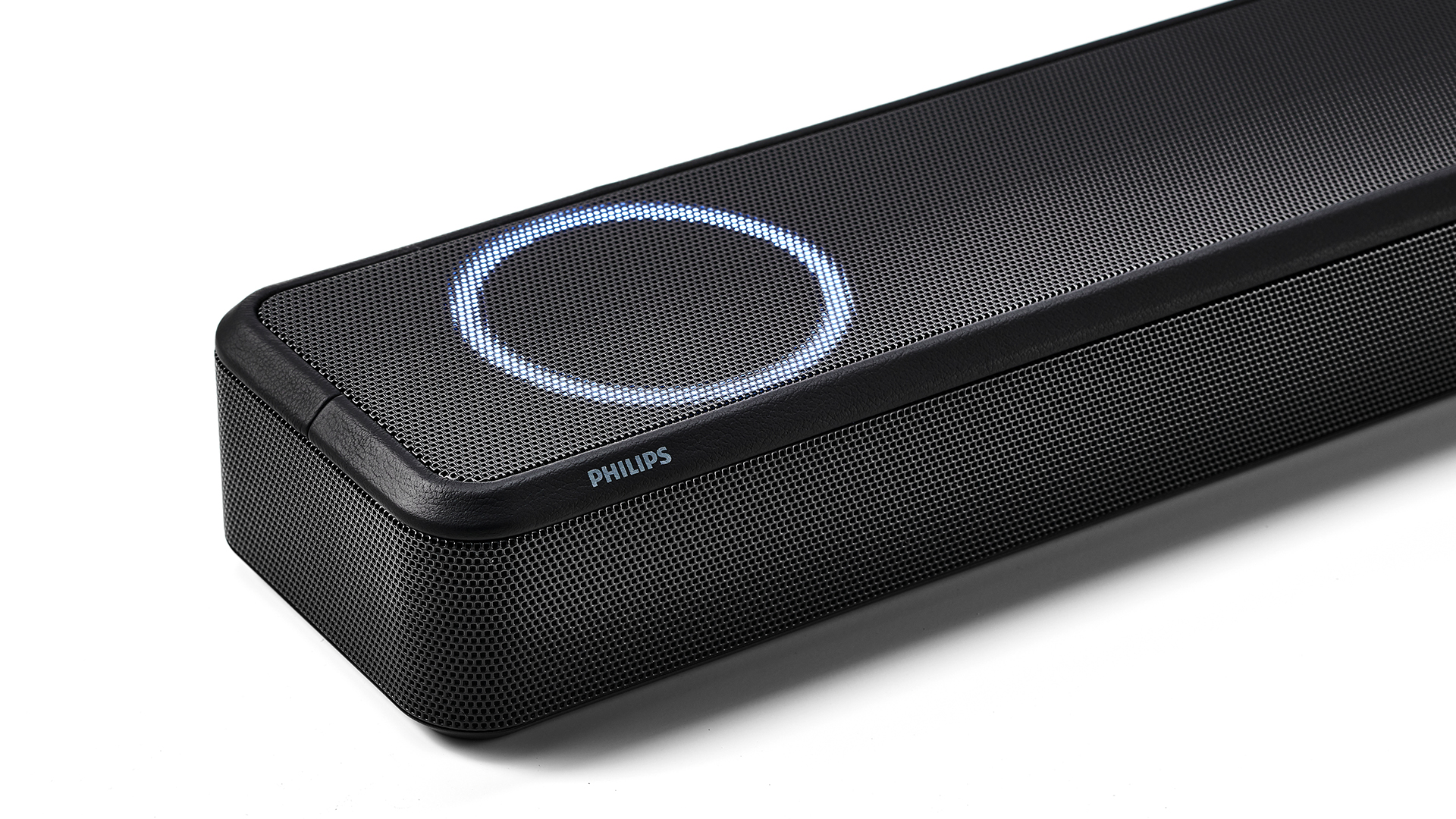
Starting with Dune in Dolby Atmos, the opening cry of the Bene Gesserit leaps from the FB1 with startlingly powerful front and side projection that fills our listening room. Its low extension immediately proves to be more substantial than most single soundbars, giving a touch of the sub-bass growl used copiously throughout this film's soundtrack.
The bass sound is pretty rounded but with a decent leading edge and plenty of punch, though occasionally the woofers take on a bit too much and start to audibly quake, as with the low pulsating drum that underscores Chani’s narration or Paul’s first attempt to use ‘the voice’.
The FB1’s approach to surround effects is particularly striking; from rainfall to bird song to the gentle tinkling of wind chimes, these delicate sounds appear to be dispersed around the listening position in a strikingly encompassing manner.
With more meaty sounds, however, there can be a slight disconnect between the surround effects and direct sound from the drivers; for example, the initial transient of the thunderous medieval-sounding drums that burst out of the soundtrack sound overly diffused and almost removed from the rest of the envelope, leading this busy percussion to sound a bit ragged.
This also results in an imbalance of high-frequency information that helps sounds appear more spacious, resulting in an overly bright presentation. We try tempering this by reducing our Dolby Atmos level, swapping sound profiles and tweaking the EQ, but find this brashness crops up as a tonal character of the soundbar across a range of content and formats.
Vocals are well projected by the FB1 with sparkling clarity even in the trickiest scenes, whether it's Mark Zuckerberg's relentless vocal assault in the opening of The Social Network or pretty much every syllable from The Batman. We never struggle to hear what's said; however, any sibilant voices, such as Liet-Kynes in Dune, can become slightly insistent.
Switching to James Bond, the bombastic score of No Time To Die has depth and scale that's rendered with all its dramatic dynamics, but the brass, in particular, sounds harsh, and we lose some of the music’s rhythmic stridence.
As Bond arrives in Matera, there are plenty of atmospheric effects for the FB1 to play with as crickets, fireworks, and voices swirl around the soundstage in a manner that, although slightly synthetic, is very engaging.
Compared to the well-measured Sonos Arc, the FB1 is more flamboyant in its approach. Still, the former’s more neutral and collected sound makes it a better all-round performer to our way of thinking, and certainly less fatiguing to our ears.
With stereo tracks, the FB1’s timing is generally more coherent than with multi-track audio and, on the whole, is enjoyable to listen to. Streaming Odetta’s Hit Or Miss, the bass on the FB1 is warmer and fuller than on the Arc, with more richness to Odetta’s alto vocal, but the Arc’s tight, controlled bass, in particular, produces a cleaner overall soundscape.
Verdict
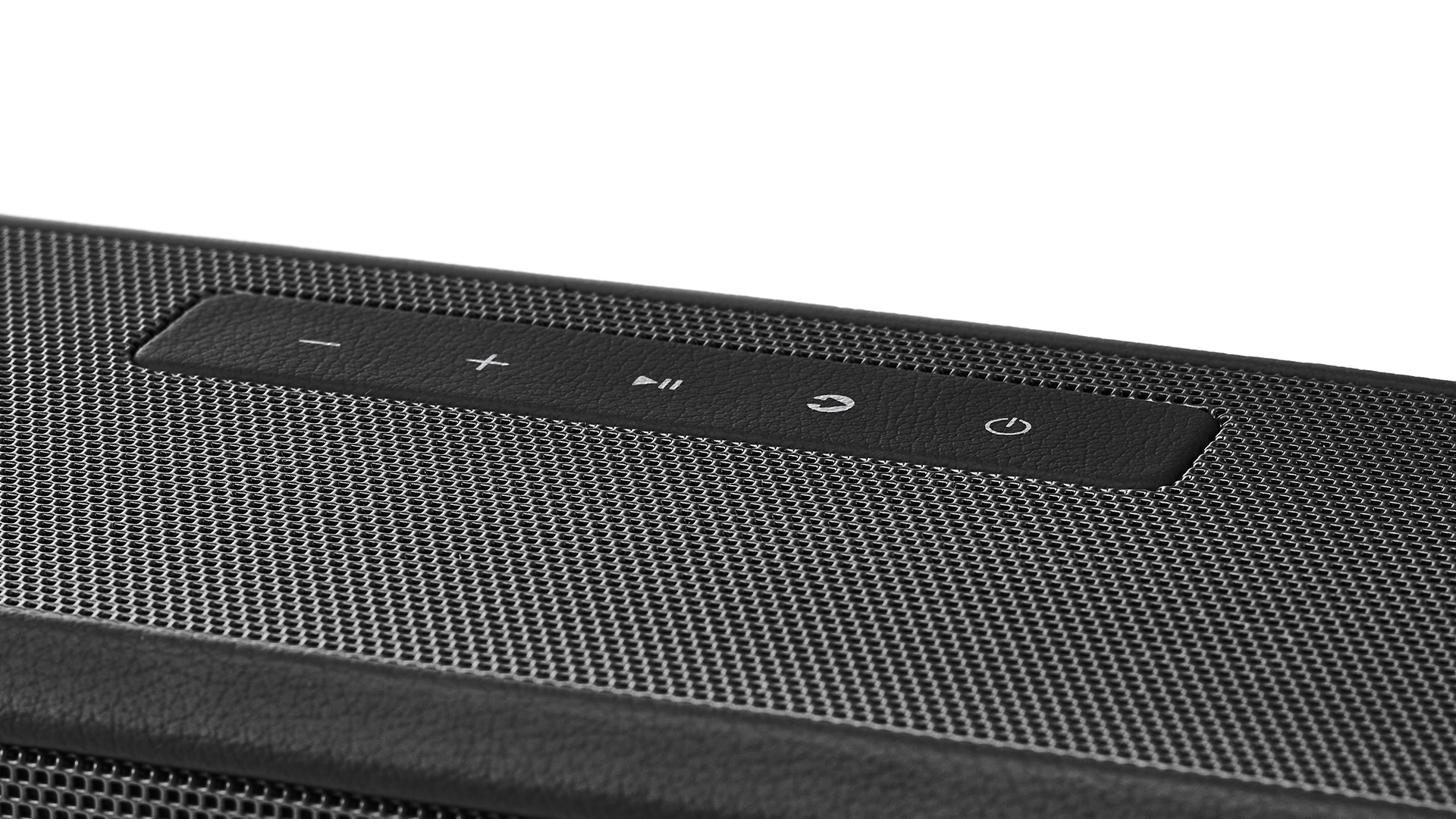
The Philips FB1 Fidelio might be one of the smartest Dolby Atmos soundbars we’ve come across, with a terrific spec and plenty of customisation options for those who like to tweak, all at a very reasonable price. It projects dialogue very crisply and delivers impressive bass and surround effects for a single soundbar.
However, sonically it veers toward a slightly aggressive, brash sound, no matter the format, which seems to be exacerbated by the spatial processing used with multi-channel audio. This can leave busy audio sounding a touch ragged and, despite the soundbar’s excessive EQ options, tricky to remedy.
SCORES
- Sound 4
- Features 5
- Build 5
MORE:
Read our review of the Sonos Arc
Also consider the Sony HT-A5000
Read our B&W Panorama 3 review
Best soundbars: excellent TV speakers at budget to premium prices
What Hi-Fi?, founded in 1976, is the world's leading independent guide to buying and owning hi-fi and home entertainment products. Our comprehensive tests help you buy the very best for your money, with our advice sections giving you step-by-step information on how to get even more from your music and movies. Everything is tested by our dedicated team of in-house reviewers in our custom-built test rooms in London, Reading and Bath. Our coveted five-star rating and Awards are recognised all over the world as the ultimate seal of approval, so you can buy with absolute confidence.

